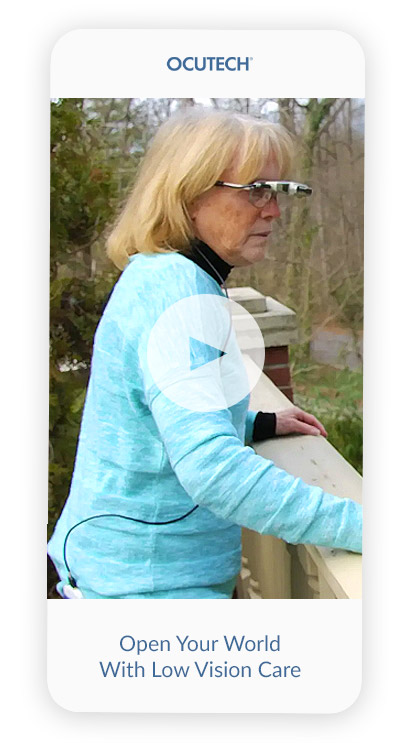Support and Solutions for Visually Impaired Children
Discovering your child has a visual impairment can be overwhelming
The challenges of raising a child with a visual impairment can be overwhelming. Questions and concerns about their education, career prospects, family life, and independence can be daunting. But there's plenty that can be done to support the unique needs of children with low vision. Ocutech is dedicated to developing vision support technology that can help them to reach their potential and live a rich and fulfilling life.
What Does It Mean to Have a Visually Impaired Child? What can be done to help them and you!
Receiving news that your child has a visual impairment or is considered ‘legally blind’ can be daunting. It's not uncommon to hear phrases like “there's nothing more that can be done”. However, this doesn't signify a complete lack of vision. It simply indicates that your child's visual abilities, known as their functional vision, may differ from those of normally-sighted children.
The good news is that with the right support and resources, visually impaired children can develop their strengths and find ways to make the most of their vision.
This brochure, written by experts in visual impairment and special education (and sponsored by Ocutech), is an excellent introduction to services and technology to help your child:
Supporting Your Visually Impaired Child in School
Collaborate with your child's educator to create a more inclusive and supportive learning environment that accommodates their visual abilities:
- Preferred Seating: Educators can allow your child to choose a seating location that suits their needs, and is away from windows or other bright light sources.
- Sun Protection: If sunglasses or a visor hat help improve their vision indoors, let them wear these aids inside.
- Handouts: Instead of requiring your child to copy everything from the board, their teacher can provide handouts with an appropriate print size.
- Extended Time: Your child may need extra time to complete tests and assignments that involve extensive reading and writing.
- Technology: Computers should be equipped with screen enlarging software to facilitate access to online and digital learning.
- Ergonomic Support: Provide a tilted writing/reading stand when close working distances or magnifiers are necessary.
- Text Size: Consult with your child’s low vision specialist to determine the text size for printed materials.
- Telescopic Assistance: Consider a monocular or bioptic telescope to enhance your child’s vision in the classroom.
- Class Education: Ask their teacher to arrange a class session to educate their classmates about visual disorders.
- Communication: Don’t assume your child will speak up if they can’t see something. Their educator should rather inquire to ensure they can engage with the materials presented.
Establishing your child’s Individual Educational Plan (IEP) and working with your child’s teachers will allow you to help create a nurturing learning environment that enables them to thrive academically and socially.
How Can Ocutech Bioptics Transform Your Child's Life?
Unlocking a child's potential involves recognizing the social aspects of distance vision. Bioptic telescopes have transformed the lives of countless children, aiding them in their school years, social lives, and beyond.
While consulting a low vision specialist is ideal for optimizing the child’s vision support, we've created a simple questionnaire to get you started on this journey. An Ocutech expert will carefully review your responses, and you'll receive a recommendation report that you can take to your low vision specialist to start the exploration of vision-enhancing low vision aids.
If you don't have a low vision specialist or are unsure how to find one, please feel free to contact us for a referral.
